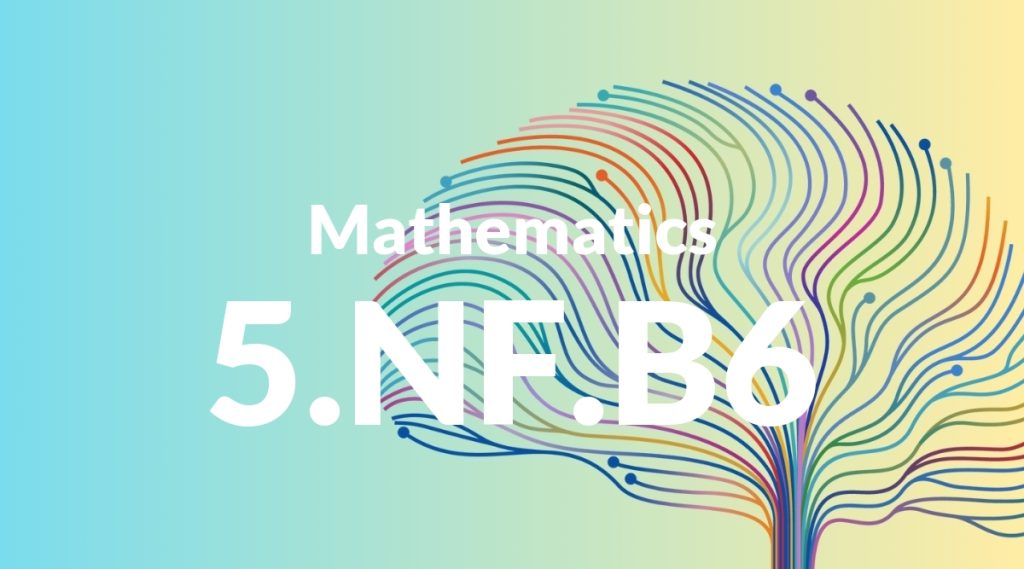Standard: 5.NF.B6 – Solve real world problems involving multiplication of fractions and mixed numbers, e.g., by using visual fraction models or equations to represent the problem.
Grade level: Grade 5
Subject: Mathematics
Domain: Numbers & Operations – Fractions
Teacher Overview
This standard focuses on solving real-world problems involving the multiplication of fractions and mixed numbers. It is crucial because it builds on students’ previous knowledge of fractions and prepares them for more advanced mathematical concepts. Understanding how to multiply fractions and mixed numbers is essential for practical applications in everyday life and future academic success. Before tackling this standard, students should be comfortable with basic fraction operations, including addition, subtraction, and comparison. They should also understand the concept of multiplication as repeated addition and be able to apply it to whole numbers.
Mastering this standard will enable students to tackle more complex fraction operations, such as division of fractions. It also lays the groundwork for understanding algebraic concepts involving rational numbers and prepares students for higher-level math courses.
Common Misconception 1
A common misconception is that multiplying fractions results in a larger number. This is incorrect because multiplying fractions actually results in a smaller product. For example, multiplying 1/2 by 1/3 results in 1/6, which is smaller than both 1/2 and 1/3.
Intervention 1
To address this misconception, teachers can use visual fraction models, such as fraction bars or circles, to demonstrate how the product of two fractions is smaller. Hands-on activities where students can physically manipulate fractions can also be beneficial.
Common Misconception 2
Another common misconception is confusing the process of multiplying fractions with adding fractions. Students might incorrectly add the numerators and denominators instead of multiplying them.
Intervention 2
Teachers can provide clear, step-by-step instructions and practice problems that differentiate between addition and multiplication of fractions. Visual aids, such as fraction strips or area models, can help reinforce the correct process.
Prerequisite Knowledge
Students should have a solid understanding of basic fraction concepts, including how to add, subtract, and compare fractions. They should also be familiar with the concept of multiplication and how it applies to whole numbers.
Subsequent Knowledge
After mastering this standard, students will be able to handle more complex operations involving fractions, such as dividing fractions and solving multi-step problems involving fractions. They will also be better prepared for algebraic concepts involving rational numbers.
Instructional Activities
- Use visual fraction models to represent multiplication problems.
- Practice solving word problems involving multiplication of fractions and mixed numbers.
- Have students create their own real-world problems involving fraction multiplication.
- Use interactive fraction games and online tools to reinforce concepts.
- Conduct group activities where students solve fraction multiplication problems collaboratively.




